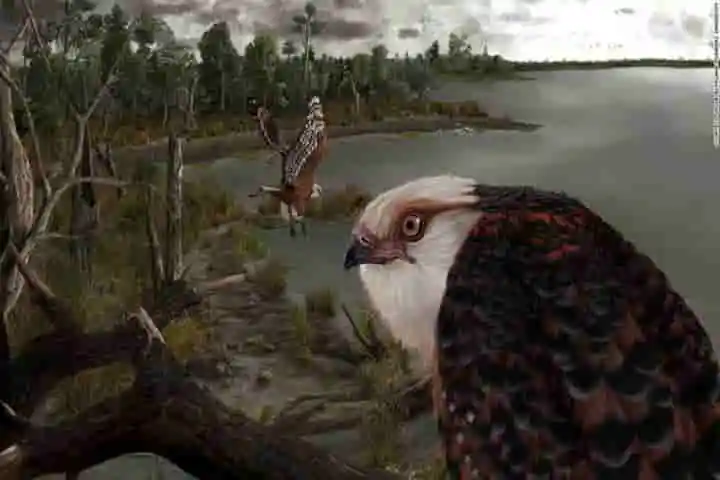The discovery in South Australia of a 25-million-year-old eagle fossil goes on to enrich the evolutionary history of raptors in the continent.
According to an article in sciencedaily.com, the Flinders University palaeontologists have excavated the oldest eagle fossils in Australia on a remote outback cattle station. The species lived during the late Oligocene and has been christened as Archaehierax sylvestris.
What is significant about this species is that it is one of the oldest eagle-like raptors in the world.
Ellen Mather, who is the first author of the study sharing details of the discovery revealed: "This species was slightly smaller and leaner than the wedge-tailed eagle, but it's the largest eagle known from this time period in Australia.” Mather is the University's PhD candidate.
This new paper was published in the journal Historical Biology, which is peer-reviewed.
Throwing more light on the species, co-author of the study, Associate Professor Trevor Worthy said: "The foot span was nearly 15 cm long, which would have allowed it to grasp large prey. The largest marsupial predators at the time were about the size of a small dog or large cat, so Archaehierax was certainly ruling the roost. With eagles at the top of the food chain, they are always few in number — and so are infrequently preserved as fossils.”
In fact the find is important considering that it is a rare discovery of preserved fossils. Remarking on this aspect, Worthy said: "It's rare to find even one bone from a fossil eagle. To have most of the skeleton is pretty exciting, especially considering how old it is."
The environment of Australia during the period when this species lived, that is the Oligocene, was very different from what is found today.
Also read: Why do humans not have tails – scientists solve the riddle
Archaehierax remains were discovered on the barren shore of a dry lake – which is known as Lake Pinpa – in a desert habitat which is sandy and desolate. The find happened while the Flinders University investigations were going on into a lost ecosystem when the continent’s interior was enveloped with trees and green forests.
As Archaehierax had to live in these dense forests it had to accept challenges of the environs and adjust to them like negotiating the trees and its branches as it hunted for its food. Mather explaining on how the species did it said: "The fossil bones reveal that the wings of Archaehierax (pron. ah-kay-hi-rax) were short for its size, much like species of forest-dwelling eagles today. Its legs, in contrast, were relatively long and would have given it considerable reach.”
She went on to add: "The combination of these traits suggest Archaehierax was an agile but not particularly fast flier and was most likely an ambush hunter. It was one of the top terrestrial predators of the late Oligocene, swooping upon birds and mammals that lived at the time."
There was plenty to choose from for Archaehierax as it had a choice to hunt koalas, possums and other animals in trees surrounding a lake, apart from waterfowl, cormorants and flamingos which were in abundance and lived in this waterbody.
Also read: Neanderthals used fire and ingenuity to hunt birds
Archaehierax remains are perhaps one of the best preserved as the partial fossil skeleton comprises 63 bones. Excited about this, Worthy observed: "I have studied this system for many years now, and this is the most exquisite fossil we have found to date.”
As the fossil remains were quite complete it helped the scientists in other areas of study too. Sharing her views on this aspect Mather said: "The completeness of the Archaehierax skeleton allowed us to determine where it fits on the eagle family tree. It shows a range of features unlike any seen among modern hawks and eagles. We found that Archaehierax didn't belong to any of the living genera or families. It seems to have been its own unique branch of the eagle family. It's unlikely to be a direct ancestor to any species alive today."




















